Also known as Rita de Cuba Years active 1920—1958 Name Rita Montaner | Occupation(s) Musician, actress Role Singer Instruments Vocals, piano | |
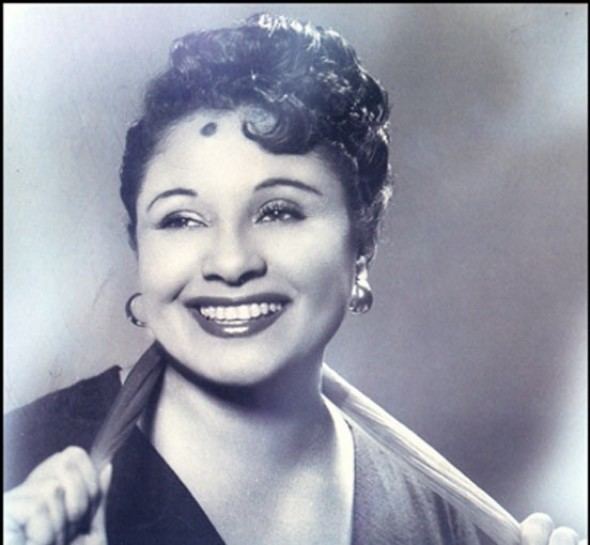 | ||
Birth name Rita Aurelia Fulcida Montaner y Facenda Born 20 August 1900Guanabacoa, Cuba ( 1900-08-20 ) Spouse Ernesto Estevez Navarro (m. 1933–1938) Movies Little Black Angels, Victims of Sin, Al son del mambo, Ritmos del Caribe, It Happened in Havana | ||
Rita montaner lullaby 1951
Rita Aurelia Fulcida Montaner y Facenda (20 August 1900 – 17 April 1958), known as Rita Montaner, was a Cuban singer, pianist and actress. In Cuban parlance, she was a vedette (a star), and was well known in Mexico City, Paris, Miami and New York, where she performed, filmed and recorded on numerous occasions. She was one of Cuba's most popular artists between the late 1920s and 1950s, renowned as Rita de Cuba. Though classically trained as a soprano for zarzuelas, her mark was made as a singer of Afro-Cuban salon songs including "The Peanut Vendor" and "Siboney".
Contents
- Rita montaner lullaby 1951
- Jurame rita montaner 1928
- Life
- Early years
- Rise to fame
- Radio days
- Night clubs
- Acting career in the 1950s
- 1920s
- 1930s
- Montaner in popular culture
- Filmography
- References
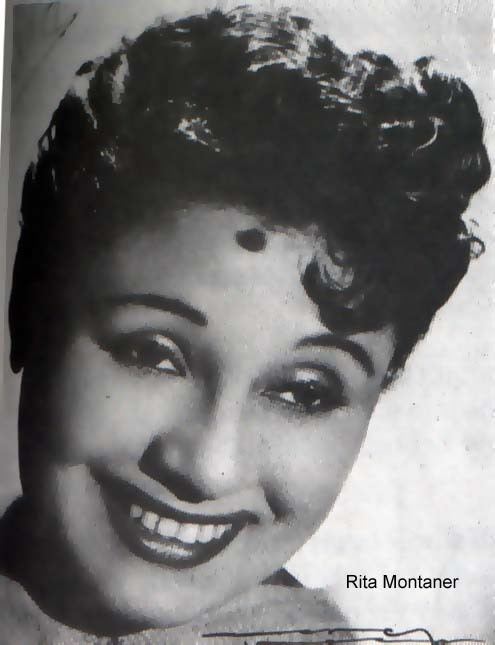
Throughout her career, Montaner kept a close personal and professional relationship with two famous musicians from her hometown of Guanabacoa: pianist-singer Bola de Nieve and composer Ernesto Lecuona.
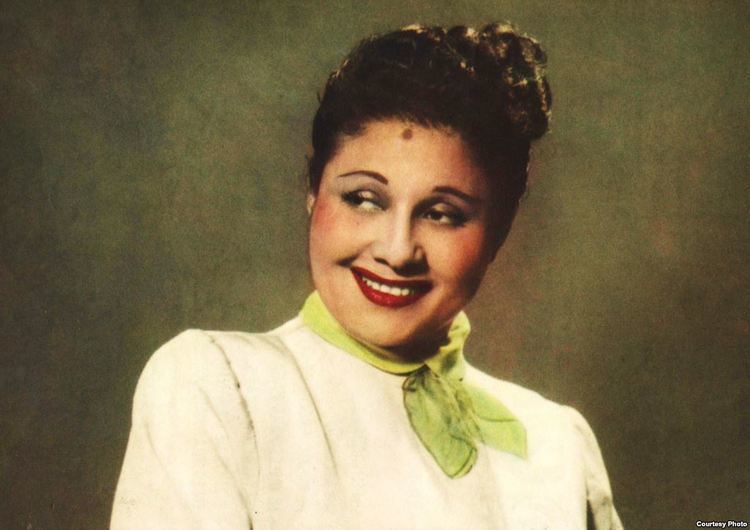
Jurame rita montaner 1928
Life
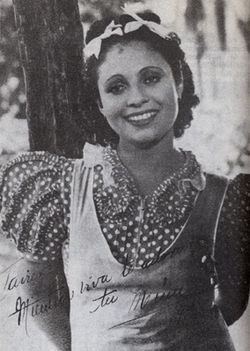
Montaner was born on 20 August 1900 in Guanabacoa, Havana, into a middle-class family. Her father, Domingo Montaner Pulgarón, was a white pharmacist and her mother, Mercedes Facenda was a mulatta; she herself was short in stature, good-looking with a fine smile, and intelligent. She learned English, Italian and French at religious school, and at 10 attended the Peyrellade Conservatory in Havana. There she studied music: solfege, theory, harmony and piano; at 16 she started voice lessons. From the start, she was a potential star: her first press notice came in 1912, her first press photograph in 1913, and in 1915 she received two bronze medals for piano. In 1917, Montaner played Mendelssohn in her final examination at the Peyrellade Conservatory in Havana; she graduated in piano, song and harmony with a gold medal.
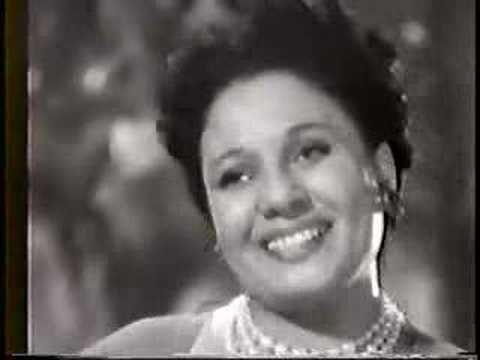
Montaner married entertainer Xavier Cugat in 1918-1920 before marrying lawyer Dr Alberto Fernández Díaz. They had two sons, Rolando and Alberto. The marriage lasted until his death in 1932, and she remarried twice. She died of cancer in 1958, aged 57.
Early years
March 1922 saw the launch of Rita's career at a concert of typical Cuban music in Havana, organized by the composer Eduardo Sánchez de Fuentes, a friend of her family. He persuaded her husband to let her appear and sing. In October, she sang on one of the first radio broadcasts in Cuba at the PWX radio station.
In 1923, she had a full professional program of work. She sang duos with Eusebio Delfín, and as a solo, pieces by Alberto Villalón, Ernesto Lecuona, Sánchez de Fuentes and others. She sang a duet from La Gioconda by Ponchielli with Lola de la Torre, a soprano, and sang solo on other pieces.
Her work as a singer and pianist with such maestros as Lecuona, Jorge Anckermann, Delfín, Sánchez de Fuentes and Gonzalo Roig was successful and immensely respectable, as befitted a middle-class married woman of those times. Gradually, however, a change began as she became fully adult. She performed in popular, but slightly vulgar theater (zarzuela; bufo); traveled to other countries and became a recording star. It became clear that performing in public was the most important thing in her life, and this was hardly compatible with her role as a bourgeois wife and mother. The first signs of change came in 1926, a year which started conventionally enough.
In 1926, she sang on stage to Lecuona's piano in his 7th Concert of Cuban music at the Teatro Nacional. On vacation in New York she needed an appendix operation; after recovering she performed at a benefit concert for the blind. Then she auditioned for the Schubert brothers, impresarios, who offered her a contract. Significantly, perhaps, her husband returned to Cuba. She made her debut in the Schubert Follies together with Xavier Cugat at the Apollo Theater. Later she had a great hit with a review entitled A night in Spain.
Back in Havana, she made her debut on stage in zarzuelas in 1927. Playing in La Niña Rita, o La Habana de 1830 (music by Eliseo Grenet and Lecuona) she sang the Congo-tango Mamá Inéz. The title role was played by Caridád Suarez, with Rita in blackface and male drag as El Calesero (the coachman). The second one-act work on the same program was the premiere of Lecuona's La tierra de Venus, where Rita sang "Siboney", which is still a Latin standard.
Rise to fame
From 1927 to 1929 Montaner recorded about fifty songs for Columbia Records, including hits from the revues and zarzuelas she appeared in, such as "Ay, Mama Inés", "Siboney", "Noche azul", "Lamento esclavo", and the first recording of "El manisero". She went to Paris for the first time, performing at the Olympia and Le Palace theaters. Still in Paris, she appeared in Josephine Baker's Revue. According to Gonzalo Roig, she began to change, becoming more bohemian, something of a diva, and generally more competitive and combative. In November 1928 she returned to Havana.
In 1929, Montaner traveled to Madrid and Valencia, then to Paris, returning to Cuba in 1930. In 1931 she traveled to Broadway under contract to Al Jolson for his musical Wonder Bar, which was set in a Paris night-club, for which she was by now more than qualified! When she was in Cuba, Rita had a regular engagement at the Edén Concert, a nightclub right in the center of Havana (Zulueta Street, near the Parque Central). Armando Romeo, later orchestra leader at the Tropicana, gave an interview later in life:
"There we would be, with Rita singing:Mejor que me calle, que no diga mas, que tu sabes lo que yo se!(Better I shut up and say no more, since you know what I know!)—while outside the cabaret walls you could hear shooting in the streets."In 1933, she went to Mexico City, with Bola de Nieve as her accompanist. She put him on the bill under his nickname, without consulting him. "It was the greatest favor she did in my life!" was Snowball's perhaps ambiguous comment. Bola was already of the opinion that she was becoming unbearable. "Rita's shows at the Teatro Iris were triumphant, but her mouth got the better of her"
On 1 April 1933, she married Ernesto Estévez Navarro. He was born in Cárdenas, Cuba, but had been deported to México. They divorced in 1938. Montaner next organized a smaller company with Pedro Vargas, whom she injudiciously paid in advance. In El Paso, Texas, Vargas denounced her as an enemy of Mexico, hoping to prevent her return to his country. "Rita tore into him, and told him he was a priests' faggot (and many other things!)" Bola said later in life when interviewed about her. Rita, furious, left the company, and Bola found himself looking at a third-class ticket to Mexico City.
The arrival of sound in films had created new opportunities for musicians, and Montaner launched on a new career as a film performer. After a musical number in a 1934 film, she made two films in 1938. Radio, too, was developing as a mass medium which was wide open to musical talent. La Montaner was to make good use of both these opportunities. But by now her temperament was getting out of control. Gonzalo Roig detailed the story of her sacking from the Lecuona show, María la O, at the Teatro Martí. During a duet with the tenor about the rekindling of betrayed love, she began to tear his clothes off on stage! That was a step too far for the management.
She divorced Ernesto Estévez in 1938, and married in 1939, for the third time, to the advocate Dr Javier Calderón Poveda.
Radio days
In 1942, RHC-Azul gave her a program Yo no sé nada (I don't know anything!) to do the character La Chismosa again, and once more the government (Fulgencio Batista's first term) applied pressure to have it taken off the air. Much later, in 1946, she had a third chance. CMQ gave her a program Mejor que me calle (Better I shut up! – a line from one of her songs) in which her street character, Lengualisa, had a side-kick Mojito (Alexandro Lugo). When the government (Ramón Grau's second term) tried to bribe her, she talked about it on the program! But, on the day of the first anniversary of the program, her brother (a policeman) was killed in a drive-by shooting. It surprised no-one that the culprits were never found. The program continued until February 1948.
Montaner often helped people in need. The famous Tropicana cabaret opened in Marianao, Havana, in late 1939. Choreographer Rodrigo Neira, a former dancer who had contracted leprosy became disfigured, poor and socially isolated. She intervened to save him from the leprosarium, supported his family and gave him accommodation in her house. She also helped Chano Pozo before his career took off, getting him a job at the radio company RHC-Cadena Azul as a door-man and bodyguard. There he sang and played conga in his spare time; he was first hired as a musician by the Havana Casino orchestra.
Night clubs
In 1939 the Tropicana theater and restaurant (as it was first called) opened its doors in Marianao. After closing temporarily when tourism declined during wartime; the Tropicana re-opened in 1945, along with other night-clubs such as the Sans Souci, the Montmatre, and their competition, the Gran Casino Nacional. In 1946 Rita signed with the Tropicana, with Bola de Nieve as accompanist, to take part in the midnight spectacular. She reigned there as the number one figure for nearly four years: the longest-running contract of her career. Mongo Santamaría commented: "This launched the era of the Cuban cabaret super-productions".
Acting career in the 1950s
Montaner continued to do theater work whenever her radio show was off the air. In 1955 she triumphed as Madame Flora in the opera La Medium by Menotti, and in 1956 in the comedy Mi querido Charles. Beginning in 1954, she co-starred in the comedy television program Rita y Willy with Guillermo Alvarez Guedes. In the late 1940s and early 1950s, she acted in numerous Mexican movies of the Rumberas film genre.
1920s
1930s
These are the films Rita appeared in as actress or singer-pianist or both.
